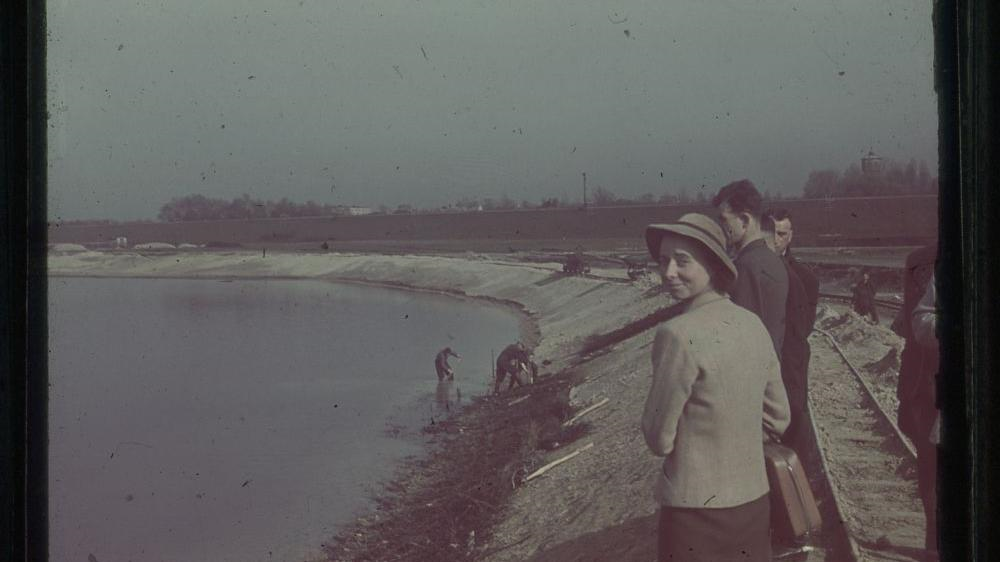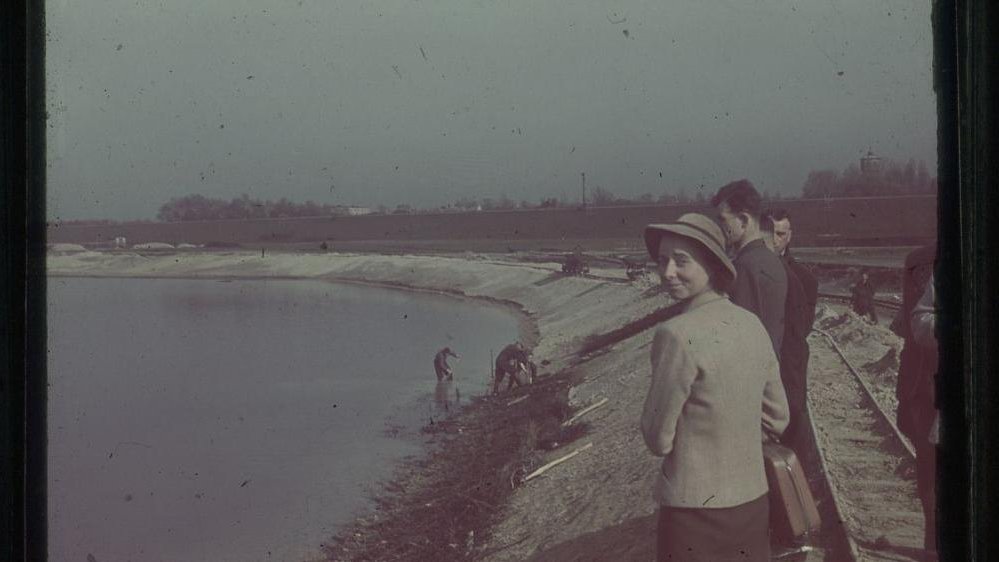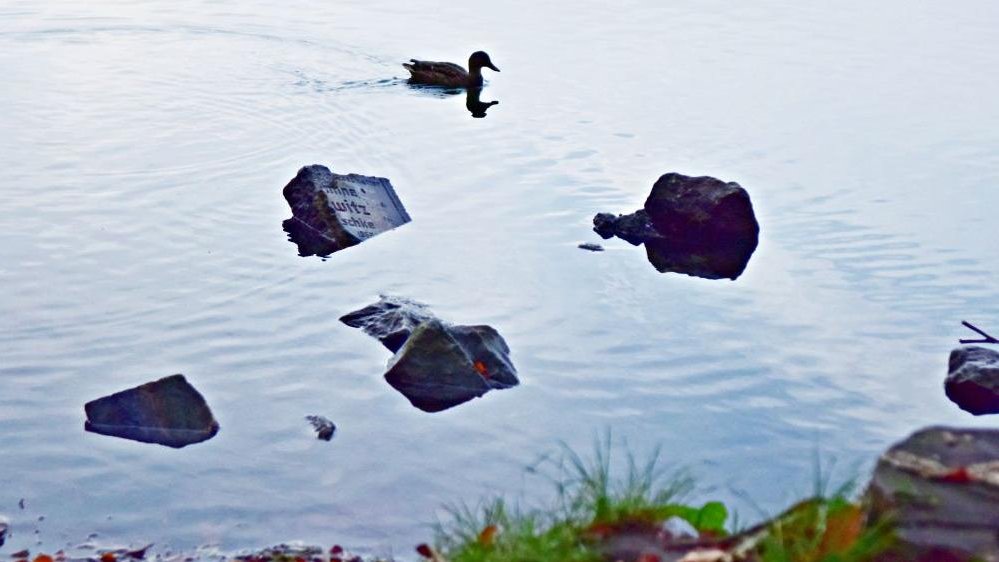Deep history

Rusałka was once overgrown by meadows, cut in half by the Bogdanka riverbed and surrounded by forests. The name of a nearby street, called Gliniana, from the Polish word for clay, was chosen for a reason. Clay was sourced here to supply a local brickworks. By the early 1920s, excavated clay pits filled up with water forming two ponds frivolously named Bycze Jajo (Bull's Egg) and Zuzanna. Poznań residents could reach them by tram 9 which would come to its end-of-the-line loop at the artillery barracks. In the summer, people would bathe in the clay ponds disregarding the lack of infrastructure and treacherous depths. Once a modern swimming pool was built in the Golęcin district, the clay ponds lost much of their popularity. Still, less affluent Poznanians continued to use them. Every summer season, food shacks referred to as "forest restaurants" would open for business. Violin and bandoneon players were there too, creating a pleasurable atmosphere. Vodka as well as "lemonade, sour milk with a yeast cake and klimki" were on the menu. Children were drawn to the mysterious abandoned fort nearby, which was the Bogdanka cannon house. An occasional Gypsy caravan would also park in the vicinity. The mid-1930s saw a push to move the zoo to the banks of the Bogdanka River. An avid advocate of this project was Prof. Adam Wodziczko, who considered it immoral to keep animals in cages in the central Jeżyce district. The plan was thwarted by the outbreak of World War II.
A lake of blood and tears
The occupying authorities had their own ideas for developing the neighbourhood. As soon as November 1939, the head of Poznań's Garten und Friedhofsamt urgently demanded that an artificial lake be made. This required removing an estimated one million cubic meters of earth! Lake Elsensee (named after the nearby mill called Elsenmühle) was envisioned as the heart of the People's Park of Golęcin. The amenities were to include an amusement park, a narrow-gauge railway line, bicycle paths, saunas, restaurants and a sports hall. A forest was planted, and the lake shores were lined with reed and a stones to give the landscape a natural look. Earth works commenced in the early spring of 1940. Immediately before it began, about two thousand Fort VII prisoners were executed by firing squad in the Golęcin forest. This was just the start of a long succession of heinous crimes and human suffering. While some hydrological engineering jobs were performed by skilled Polish workers, the task of digging out the basin, removing clay and strengthening the banks was forced upon Jewish prisoners. The majority of them came from the Wielkopolska Region and the Łódź area. Held in the Krzyżowniki camp and at a number of other sites, they would depart to work daily before dawn. They were forced to toil 12 hours a day on merely a one-litre bowl of thin soup. With no protective clothing, the Jews waded through waist-deep water in all seasons. "Beating and bullying was as common as the daily bread", wrote the Polish worker Jan Jankowiak (Institute of Jewish History, ref. 301/6405) in his memoirs. The Jews were not allowed to talk. Those who did were forced to march with stones on their shoulders, squat jump or hang onto tree branches by their hands. At times, guards would summon the muddied workers and ask them mockingly why they were so dirty. They would then order them to immerse in icy water or scrub their hands to the flesh with a piece of brick. Anyone unfit for work would be shot dead. In the spring of 1940, German soldiers were ordered to blow up the cannon house. Eleven Jews locked inside by the bomb planters died in the rubble. A prisoner caught attempting to escape was trampled by the hooves of the Schutzpolizei horse patrol. Another unsuccessful escapee was dragged behind a carriage. Several dozen Jews were shot by the SS and buried in a mass grave. Not a trace of such atrocities was shown in the colourful photos taken for the Park and Cemetery Board so as not to spoil the pleasurable experience for visiting officials and journalists. The construction of the lake was completed in September 1942. The Ostdeutcher Beobachter daily reported: "We owe big thanks the city who have made the capital of the Warta Country not only more beautiful but also more enjoyable".
Underwater Lapidarium
At Lake Rusałka, the Jews were not only debilitated physically. An effort was also made to eradicate all traces of their traditions and history. Stone matzevots from the former Jewish cemetery at ul. Głogowska were used to construct bridges, paths and culverts. Broken into smaller pieces, the gravestones reinforced an artificial terrace about 2 meters under the water surface. Other fragments were scattered along the shore to serve as a breakwater. One can only imagine how religious Jews might have felt forced to desecrate the memory of members of their community. A small number of tombstones from Evangelical and Catholic cemeteries were also used on the Rusałka project. Every few years during low water, the lake reveals the shattered gravestones. Until now, they were removed on an ad hoc basis and placed for safekeeping in the forester's lodge at ul. Wałecka, in Fort VII and in the Żabikowo Museum. In the autumn of 2019, the matter of the Lake Rusałka matzevots was raised in the city council by councillor Andrzej Rataj. Maciej Krajewski, a photographer and social activist, brought a separate appeal on the issue to the Mayor of Poznań. Many volunteers have stepped forward offering to remove and clean the tombstones. The Mayor requested that the water company Aquanet ascertain the technical requirements of the project. Ultimately, the city designated a site near Lake Rusałka to store the matzevot slabs. Near a local overpass, a number of City Information System posts will be set up with information aimed to popularise the lake's history. As the tombstones are part of an underwater shore protection system, they cannot be removed all at once. Nevertheless, eight decades on, the time has come to sort out the remnants of Nazi bestiality.
Aleksander Przybylski
translation: Krzysztof Kotkowski
© Wydawnictwo Miejskie Posnania 2020
See more

From One Celebration to Another

Christmas Markets and Fairs with Attractions

Truly Festive Vibes


